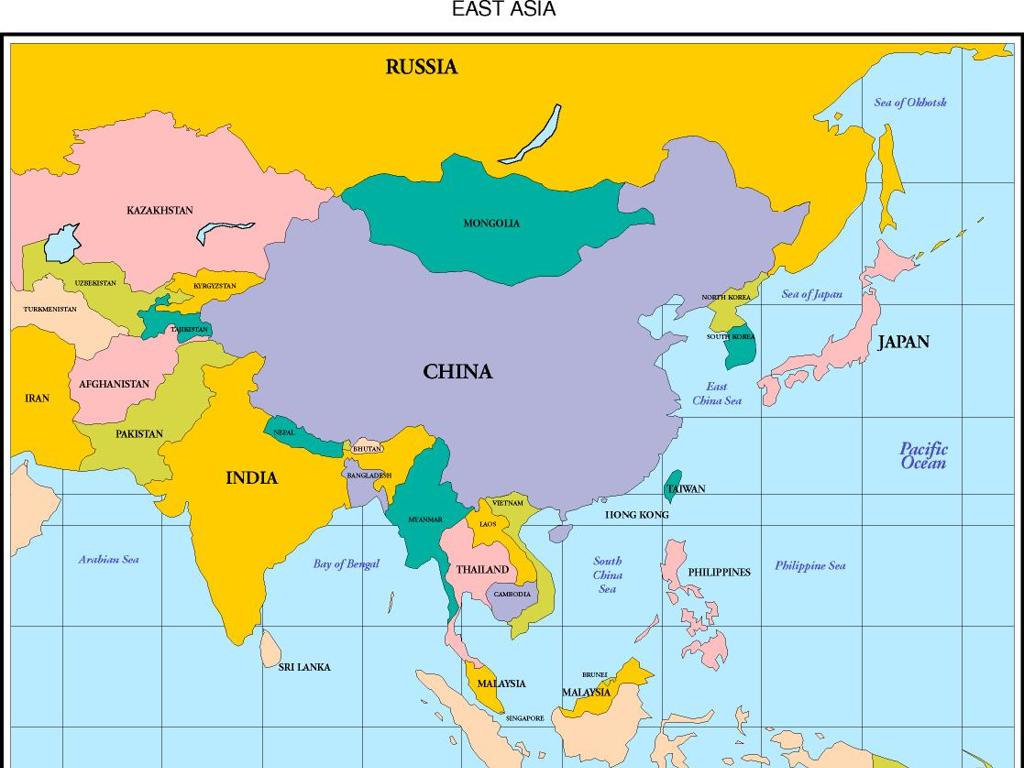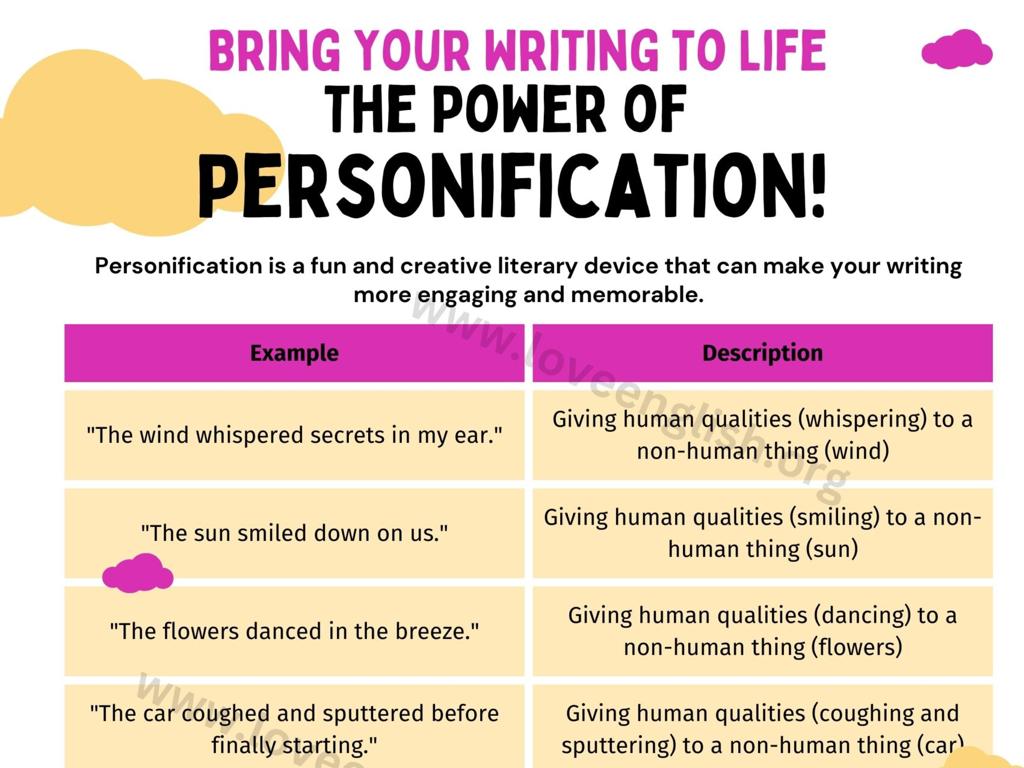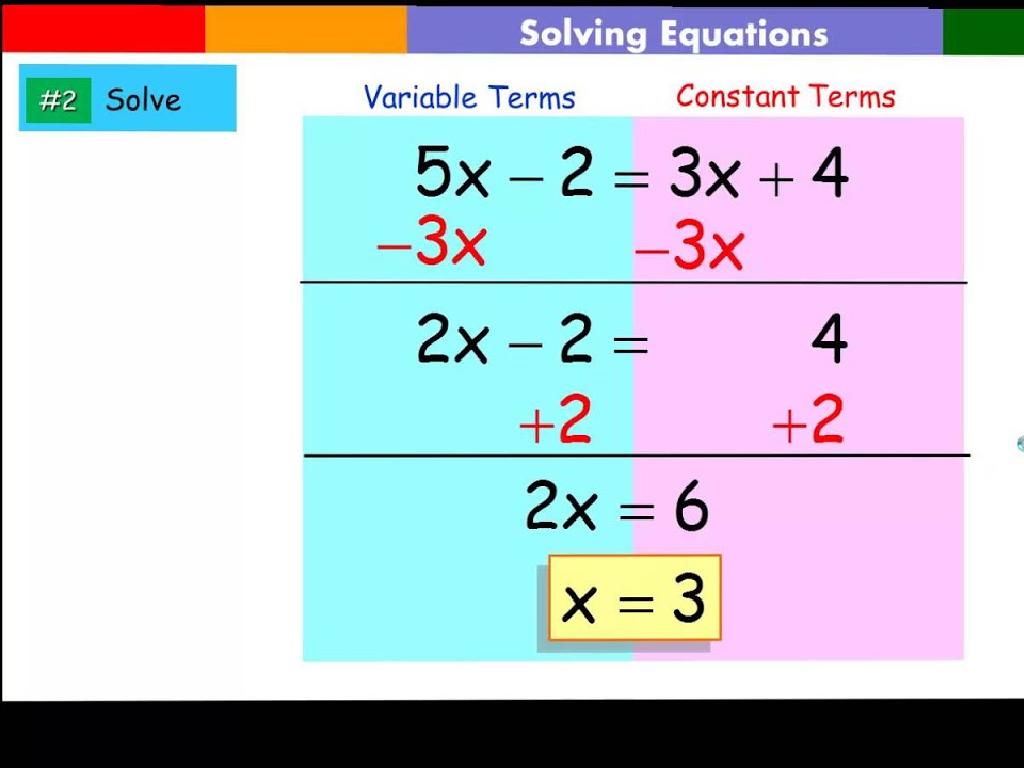Tile A Rectangle With Squares
Subject: Math
Grade: Second grade
Topic: Area And Tiling
Please LOG IN to download the presentation. Access is available to registered users only.
View More Content
Welcome to Area and Tiling!
– Greetings and introduction
– Tiling rectangles with squares
– Using square tiles to fill up a rectangle
– Covering shapes completely
– Every part of the rectangle should be covered
– No gaps or overlaps
– Tiles should fit perfectly; like a puzzle
|
Begin the class with a warm welcome and introduce the concept of tiling as a fun activity. Explain that tiling involves covering a surface, in this case, a rectangle, with flat shapes without leaving any space in between or stacking them on top of each other. Use simple language to describe the process and ensure that the students understand the importance of not having gaps or overlaps for accurate tiling. You can use floor tiles or a checkerboard as relatable examples. This lesson will lay the foundation for understanding the concept of area in future classes.
Understanding Area
– Area is surface size
– Area is like paint used inside a shape
– Imagine filling in a shape with paint; that’s the area!
– We measure area in squares
– Square units fit inside the shape to measure area
– Practice with square tiles
– Let’s use square tiles to cover a rectangle completely
|
This slide introduces the concept of area to second-grade students. Begin by explaining that area is the size of a surface, using the analogy of how much paint would be needed to cover the inside of a shape. This visual can help them grasp the concept more concretely. Emphasize that area is measured in square units, which could be related to tiles used to cover a floor or squares on a checkerboard. Encourage students to think about how many square tiles they would need to cover different rectangles without gaps or overlaps. This will set the stage for hands-on activities where students will use square tiles to tile a rectangle and understand the practical application of measuring area.
Understanding Tiling with Squares
– What are tiles?
– Tiles are used to cover areas neatly.
– Today’s focus: square tiles
– Square tiles fit together perfectly.
– Each tile equals one unit
– Imagine a tile as a small square on the floor.
– Tiling without gaps or overlaps
– Like a puzzle, tiles must fit just right.
|
This slide introduces the concept of tiling as a method to cover a surface, using square tiles as a practical example. Emphasize that each tile represents a single unit of area, which will help students understand how to calculate the total area of a rectangle by counting tiles. Ensure that students grasp the importance of placing tiles without gaps or overlaps for accurate measurement. Use simple, relatable examples such as tiling a floor or a wall. You can bring square tiles to class for a hands-on activity, allowing students to practice tiling a rectangular area on their desks or a designated space in the classroom.
Tiling a Rectangle to Learn About Area
– A rectangle has 4 sides and angles
– Cover rectangle with square tiles
– Each tile represents 1 square unit of area
– Count tiles to find the rectangle’s area
– The area is the number of tiles inside the rectangle
– Practice with different sized rectangles
– See how the area changes with rectangle size
|
This slide introduces the concept of area through a hands-on activity where students will use square tiles to cover the surface of a rectangle. Emphasize that a rectangle is a shape with four sides and four right angles. Explain that by covering a rectangle with square tiles without gaps or overlaps, we can find the area of the rectangle, which is the number of square tiles that fit inside it. Encourage students to experiment with rectangles of different sizes and to count the tiles to determine the area. This activity will help them visualize the concept of area and understand that it represents the amount of space inside a shape.
Counting Tiles: Area of a Rectangle
– Place tiles row by row
– Count tiles in one row
– Count the number of rows
– Multiply rows by tiles in one row
– If there are 4 tiles in a row and 3 rows, 4 tiles x 3 rows = 12 tiles total
|
This slide introduces students to the concept of finding the area of a rectangle by tiling. Start by explaining that tiling a rectangle means covering it completely with squares, without gaps or overlaps. Demonstrate placing tiles row by row, and guide students to count the number of tiles in one row. Then, have them count the total number of rows. The final step is to multiply the number of tiles in one row by the number of rows to find the total number of tiles used, which represents the area of the rectangle. Use visual aids or manipulatives to help students understand the concept. Encourage them to practice with different sized rectangles and to verify their answers by physically counting all the tiles.
Tiling a Rectangle with Squares
– Count rows of tiles in a rectangle
– Count tiles in each row
– Multiply rows by tiles for area
– Example: 3 rows x 4 tiles in each = 12 tiles
– Area equals total square tiles
– 3 rows of 4 gives us 12 square units of area
|
This slide introduces the concept of area through the process of tiling a rectangle with square tiles. Students will learn to count the number of rows and the number of tiles in each row to find the total number of square tiles that fit inside the rectangle. By multiplying the number of rows by the number of tiles in each row, they can calculate the area of the rectangle. The example provided uses a rectangle with 3 rows and 4 tiles in each row, resulting in an area of 12 square units. Encourage students to visualize the rectangle being covered by square tiles and to understand that area is a measure of how many square tiles fit inside it. This concept will help them grasp the foundational idea of area measurement.
Let’s Practice Tiling!
– Time to try tiling on your own
– Use square tiles to fill rectangles
– Place the squares side by side on the worksheet shapes
– Count each tile carefully
– Keep track of how many tiles you use
– Make sure no gaps or overlaps
– Check that the entire shape is covered without spaces
|
This slide is for a hands-on class activity where students will apply their understanding of area and tiling to a practical task. Provide each student with square tiles and a worksheet with rectangle outlines. Instruct them to cover the rectangles completely with the tiles, ensuring they count each tile as they place it. This will help them understand how tiling a rectangle with squares can determine the area of the rectangle. Encourage them to be precise and avoid leaving gaps or creating overlaps. After the activity, discuss as a class how many tiles it took to cover each rectangle and what this tells us about the area of each shape. This exercise will reinforce the concept of area and provide a foundation for understanding multiplication as an array.
Class Activity: Tile the Playground
– Pretend to tile a playground
– Work in groups with paper squares
– Cover the whole rectangle shape
– Share your playground’s square units
– How many squares did it take to cover it?
|
This activity is designed to help students understand the concept of area by tiling a rectangle with square units. Divide the class into small groups and provide each group with a large rectangle shape on the floor or a table and enough paper squares to cover it completely. Students will work together to place the squares within the rectangle without overlapping or leaving gaps. Once they have tiled their ‘playground,’ each group will count and record the number of square units used. Afterward, groups will share their results with the class, discussing any differences in their counts and why they may have occurred. This hands-on activity will reinforce the idea that area is measured in square units and that it can be found by counting these units.
Review: Tiling a Rectangle with Squares
– Recap on area and tiling
– Area is the space inside a shape. We use tiling to measure it.
– Calculating rectangle area with tiles
– Count the number of square tiles along the length and width, then multiply.
– Time for your questions
– Let’s answer any questions you have about tiling and area.
|
This slide is meant to review the concepts taught about area and tiling. Start by asking the students what they remember about what area is and how tiling can help measure it. Then, guide them through the process of calculating the area of a rectangle by using square tiles – multiplying the number of tiles along the length by the number of tiles along the width. Finally, open the floor for questions, ensuring that students feel comfortable with the material and clarifying any doubts. Be prepared with additional examples or activities in case some students need more practice to understand the concept fully.
Homework Challenge: Tiling Rectangles
– Draw a rectangle for homework
– Tile the rectangle with squares
– Use square tiles to cover the rectangle completely
– Calculate the rectangle’s area
– Count the tiles to find the area
– Share your findings tomorrow
|
This homework task is designed to help students understand the concept of area through a hands-on activity. By drawing a rectangle and tiling it with squares, students will visually and physically see how the area of a shape is covered. Encourage them to count the number of square tiles that fit within the rectangle to determine its area. Remind them that the area is the number of square units that cover a surface. Prepare for a show-and-tell session where each student will present their rectangle and explain how they calculated the area. This will reinforce their understanding and allow them to see different rectangle sizes and areas.






